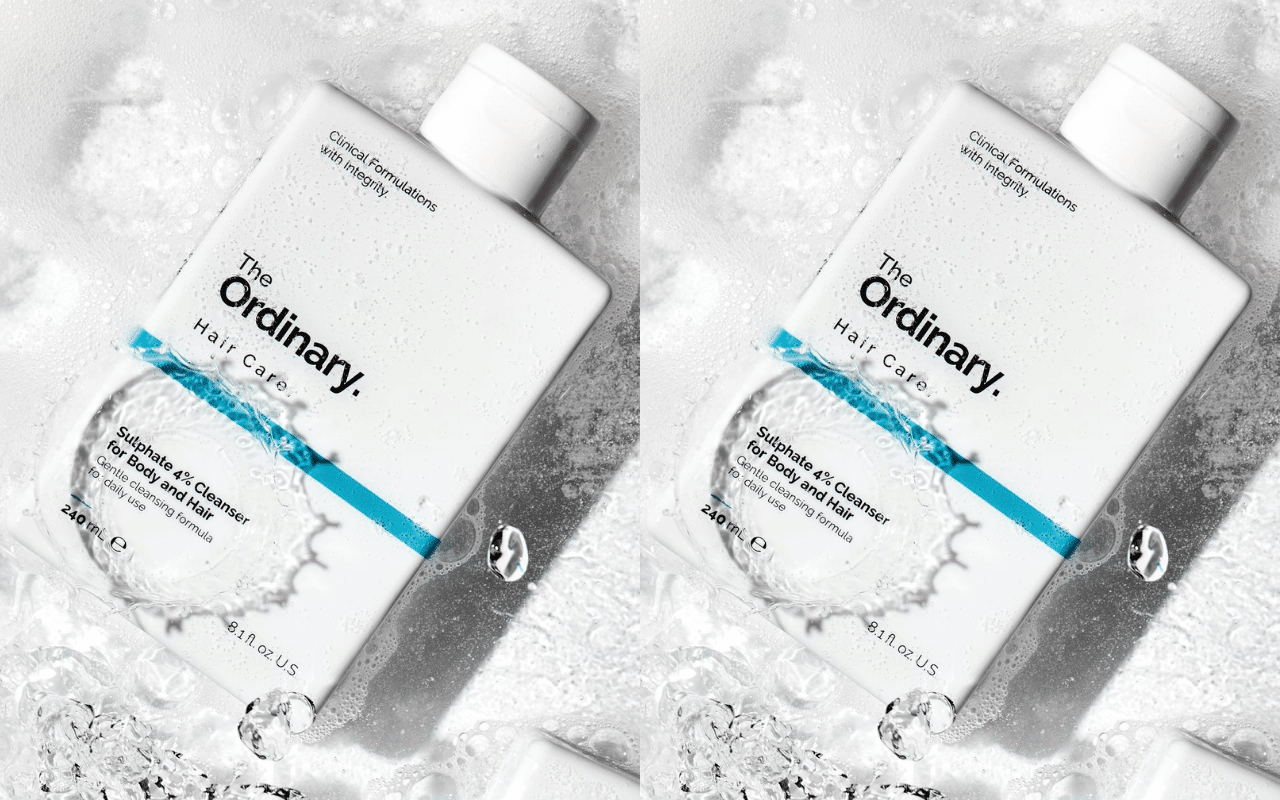
If there has been a single, memorable shift in the beauty industry in recent years, it’s that synthetics in beauty = bad. A direct correlation with the rise of the “clean” beauty movement – the transition from science-backed or clinically proven to buzzy terminology like “organic” and “natural” has meant ingredients like sulphates are by and large now avoided.
But as The Ordinary has proven – first with its range of affordable and effective skincare, now with its entry into hair care – science backed formulas provide results (just search #theordinarypeelingsolution on TikTok). Enter: The Ordinary’s Sulphate 4% Cleanser for Body and Hair, Behentrimonium Chloride 2% Conditioner and Natural Moisturizing Factors + HA for Scalp.
But, why have synthetics, specifically sulphates, developed such a bad rap over the years?
We spoke to Prudvi Mohan Kaka, the Chief Scientific Officer at DECIEM to debunk the biggest myths surrounding sulphates in hair care, and break down why The Ordinary have bet big on the controversial ingredient to make their mark on the hair care industry.
First thing’s first: what are sulphates? Sulphates belong to a group known as surfactants that break down and remove dirt and other impurities. This is due to their ability to dissolve the barrier between dirt, oil and water. A wildly common ingredient in shampoo, sulphates get a bad rap thanks to the potential to strip the hair and in high percentages, irritate the scalp. However, where traditional shampoo formulas on the market are typically between 10 and 20%, The Ordinary’s Sulphate 4% Cleanser for Body and Hair “incorporates [as the name suggests] sulphates at a low concentration of 4% which gives the formula its cleansing ability while [alleviating] concerns around irritation,” he says.
“The issue with sulphates is not the ingredient itself, but the concentrations they are often used at,” Mohan Koka explains. And when a formula contains 10-20% sulphates, the drying effect must then be counteracted by adding other ingredients, “such as occlusives and silicone-based compounds,” further separating sulphate led hair care formulas from the “clean” beauty products being marketed. As Mohan Kaka shares “unfortunately, much of the [negative mentality for consumers when it comes to sulphates], stems from anti-sulphate marketing campaigns that do not align with much of the peer-reviewed scientific evidence. One of the primary concerns – that sulphates [can] be stripping – can be easily addressed by proper formula development and appropriate irritation testing performed by the product manufacturers, which is what we have done,” he says.
As a science and education-led brand, the ethos behind The Ordinary’s move into this new space is the “skinification” of the scalp – an often overlooked component of hair care. “Skinification advocates for providing the scalp with the same level of care one would with the face. As scalp care has often been an overlooked step in a hair care regimen, the neglect of scalp maintenance can lead to a variety of scalp and hair concerns. Products that provide hydration, exfoliation, and barrier support to the scalp…promote healthy looking hair,” he says. A stark contrast to the “quick fix solutions that target short-term appearance” sometimes seen in the industry, the “skinification” method taken on board by The Ordinary aims to bring the same honest and transparent perspective to hair care, as it has to skincare.
A 3-step approach – The Ordinary is looking to help consumers build a regimen for their hair and scalp, the same way they would a morning or night skincare routine. “There is a gap in consumer education regarding scalp care,” explains Mohan Kaka. “The scalp requires effective cleansing and moisturization to protect the skin barrier function,” he says – something The Ordinary now has covered with the Sulphate 4% Cleanser for Body and Hair, Behentrimonium Chloride 2% Conditioner and Natural Moisturizing Factors + HA for Scalp.
If the brand’s reputation in skincare is anything to go by, we’d say The Ordinary’s hair care range is about to become the next big thing.
This article is brought to you by


